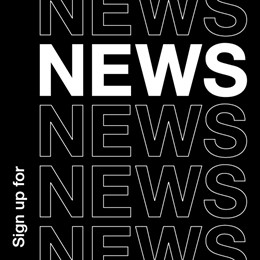The significance of cultural nuances in design

Bassel Kanounji, associate creative director at Omnia, discusses how cultural nuance can aid connections between brands and their audiences.
Of the 223 nationalities on the globe, over 200 of them work and live in the UAE, according to the Federal Competitiveness and Statistics Centre. 200 different cultures, 200 ways of thinking and 200 experiential histories; and that’s over-generalising it. Some would call it a visual communicator’s nightmare; we think of it as a fascinating opportunity to use cultural nuances in design to truly connect with our audience.
By delving into cultural nuances, we gain insight into our audience’s core values, experiences and desires, allowing us to create powerful and inclusive designs that resonate beyond mere aesthetics. We can use visual language to shape perspectives and orchestrate how people interact with brands. We can inspire originality through cross-cultural design solutions and circumvent cultural sensitivities that might otherwise kill a brand.
Dhai Dubai Light Art Festival brand identity
We recently exercised our understanding of cultural nuances in creating a brand identity for the Dhai Dubai Light Art Festival. The objective of this pioneering initiative was to showcase local Emirati artists specialising in the medium of light, connect people through art and promote Dubai’s cultural identity on a global stage.
When creating the brand identity, it was essential for us to capture the dynamic and captivating spirit of the festival while echoing the essence of Emirati culture and heritage. With over half the Omnia team being native Arabic speakers and long-term residents of the UAE, we were well-versed for the job.
The initial task was to use our understanding of cultural nuances to define a strong concept inspired by the festival’s overarching statement “Light Influences Life”. We discovered that light plays a significant role in the daily lives of Emiratis. It marks the ritual of the call to prayer, connecting their physical and spiritual worlds. We applied this insight into our design thinking by visually demonstrating the transition of light, from the soft glow of dawn and dusk to its commanding intensity at noon, through to its absence at night using varying gradients.
Further explorations led us to the influence of light and shadow in regional art and architecture, like the geometric ‘mashrabiyas’ prevalent in the UAE. These unique shapes and patterns found their place in our designs creating an intricate Emirati aesthetic that simultaneously evokes a sense of authenticity and symmetry.
A study of local calligraphy prompted us to use the ‘kashida’, an elongated stroke, as a metaphor in our designs to demonstrate the relationship and connection between people and art through a platform that uses light for creative expression. Meanwhile, some direct cultural elements also informed the design, such as treated photographs of the artists participating in the festival.
Finally, our colour palette was born from the vibrant energy of next-generation Emiratis and emerging artists, resulting in high-contrast, intense neon colours that speak to the medium and its audience.
By aligning design thinking with cultural insights and nuances, from conception to execution, we created a noteworthy brand identity that is inherently Emirati while resonating with a broader audience. Proving that design and culture cannot live in isolation if we, as visual communicators, want to make an inspiring and enduring impact.













